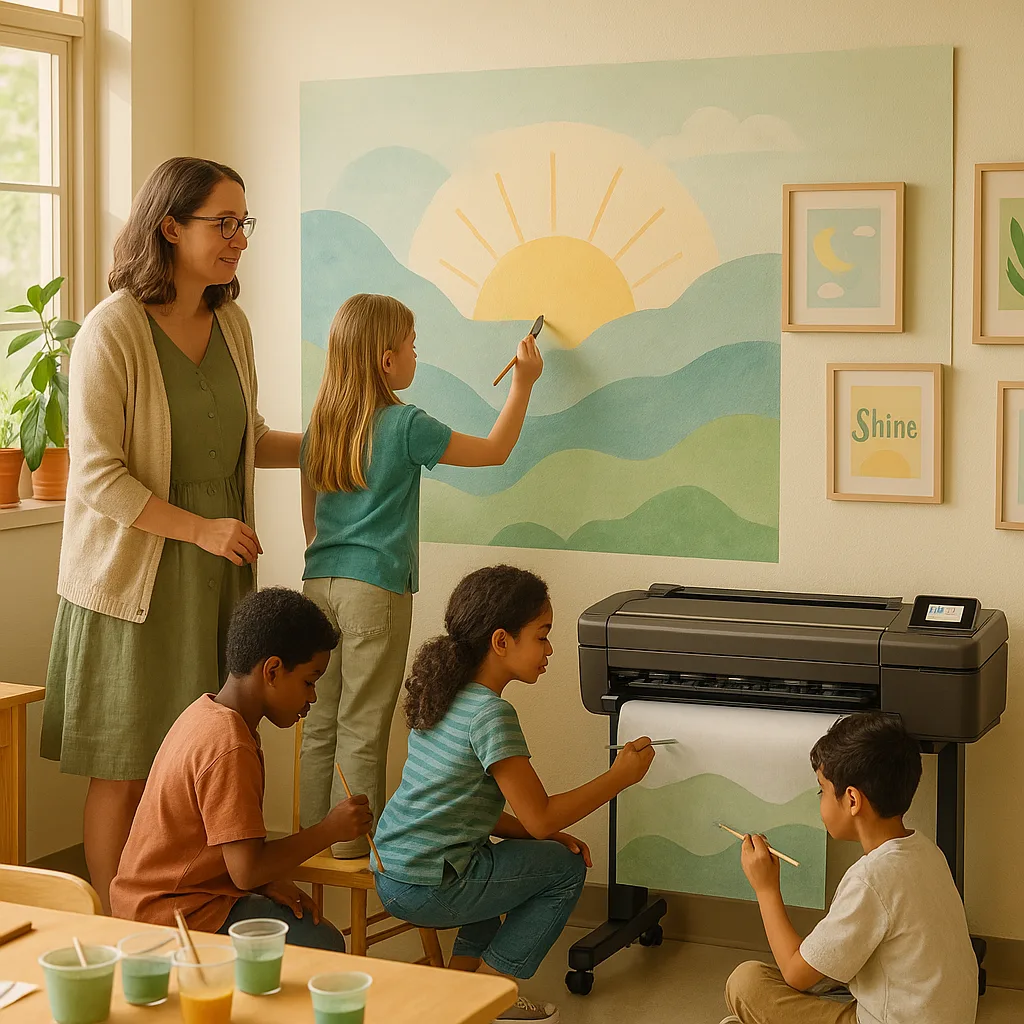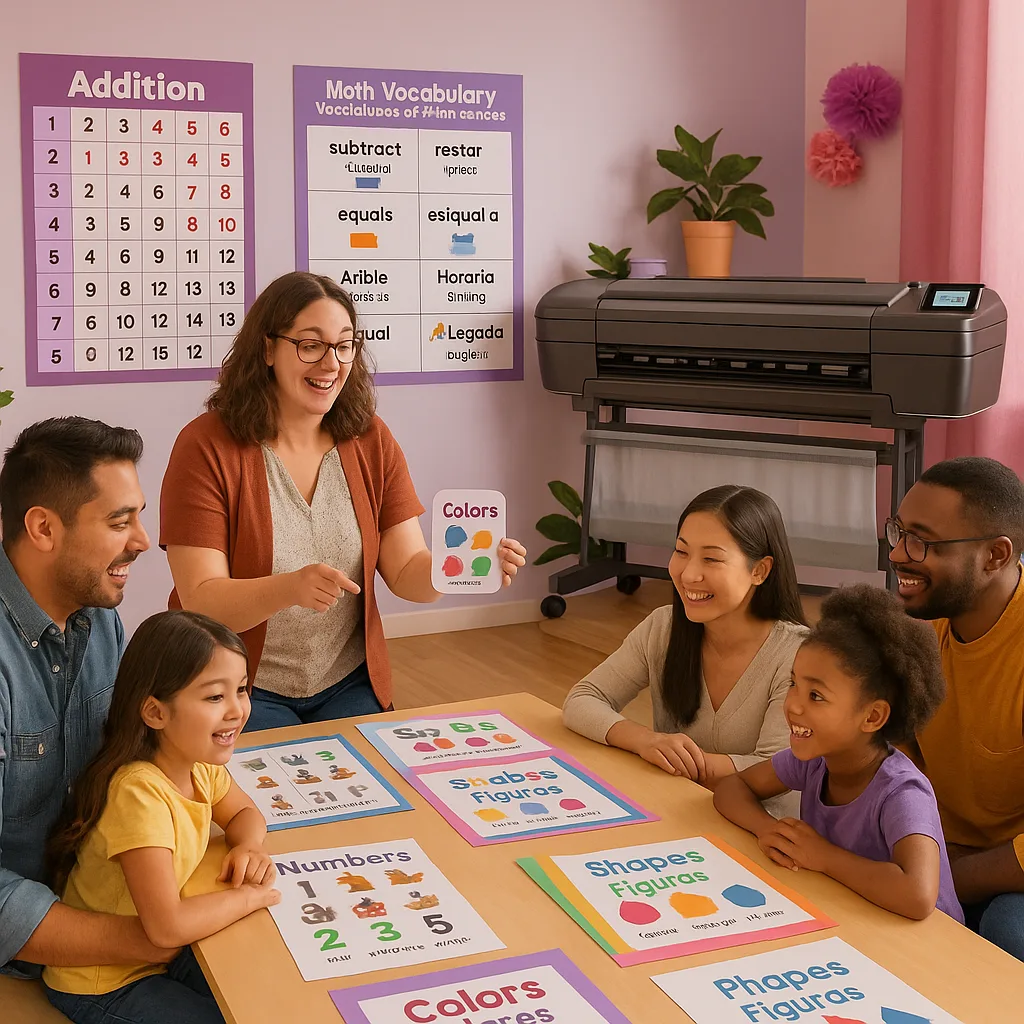
Teacher Poster Maker Lamination: Professional Finishing
Teacher Poster Maker Lamination Essentials
Last Tuesday, I watched Mrs. Chen’s third-graders carefully carry their freshly laminated solar system posters down the hallway. Two weeks later, those same posters still gleam on the bulletin board—no peeling edges, no water damage from the drinking fountain mishap, and definitely no tiny fingerprints clouding Jupiter’s Great Red Spot. That’s the magic of proper teacher poster maker lamination techniques.
After helping over 200 teachers master their lamination stations this year, I’ve learned that the difference between a poster that survives one semester versus one that lasts five years often comes down to those final finishing touches. Whether you’re protecting student work, preserving anchor charts, or safeguarding those gorgeous visuals from your color poster maker for schools, proper lamination transforms temporary displays into lasting educational resources.
Choosing Your Lamination Arsenal
Every September, I set up what I call “Lamination Boot Camp” in our library. Teachers bring their questions, their bubbled disasters, and their curled catastrophes. Here’s what I’ve learned about matching lamination methods to your specific needs:
Hot Lamination
Best For: Permanent displays, outdoor signage, high-touch areas
Thickness Options:
• 3 mil: Flexible protection for frequently handled items
• 5 mil: Standard choice for classroom posters
• 7-10 mil: Rigid protection for standing displays
Temperature Sweet Spot: 290-310°F for most school printers
Cold Lamination
Best For: Heat-sensitive materials, quick projects, inkjet prints
Thickness Options:
• 1.5 mil: Light protection for temporary displays
• 3 mil: Standard classroom use
• 5 mil: Enhanced durability without heat
Pro Tip: Perfect for those last-minute Monday morning projects!
The Art of Edge Sealing
Remember that beautiful world map that started peeling at the corners after just two months? That’s what happens when we skip proper edge sealing. Here’s my foolproof method that’s saved countless displays in our high-humidity coastal climate:
Leave a Border
Always extend lamination 1/4″ to 1/2″ beyond poster edges
Round the Corners
Use a corner rounder to prevent lifting and dog-ears
Burnish Thoroughly
Use a laminating squeegee from center outward
Teacher Poster Maker Lamination Troubleshooting Guide
Last month, our fifth-grade team nearly gave up on laminating their science fair boards after a series of bubbling disasters. But with a few adjustments, those same teachers are now our lamination champions! Let me share the solutions to the most common issues I encounter:
Problem: Bubbles and Wrinkles
Common Causes:
• Feeding too quickly through the laminator
• Insufficient heat (for hot lamination)
• Trapped moisture in the paper
• Uneven pressure from worn rollers
Solutions:
• Slow your feed rate to 1-2 feet per minute
• Pre-warm your laminator for 15-20 minutes
• Let inkjet prints dry for 24 hours before laminating
• Clean rollers monthly with isopropyl alcohol
• Use a carrier sheet for thin papers
Pro Recovery Tip: Small bubbles often disappear as the laminate cools. For stubborn bubbles, prick with a pin and smooth with a bone folder while still warm.
Problem: Curling Edges
Common Causes:
• Temperature too high
• Moisture imbalance
• Single-sided lamination
• Thin paper stock
Solutions:
• Reduce temperature by 10-20°F
• Use encapsulation (both sides) for best results
• Choose thicker paper from your teacher poster maker
• Add a backing sheet for single-sided projects
• Store flat under weight for 24 hours after laminating
Climate Consideration: In dry climates, run a humidifier near your lamination station to maintain 40-50% humidity.
Problem: Static Electricity Buildup
Especially problematic in:
• Winter months
• Air-conditioned spaces
• Desert climates
• Carpeted rooms
Solutions:
• Use anti-static spray on rollers weekly
• Ground your laminator properly
• Increase room humidity with a humidifier
• Wipe finished pieces with dryer sheets
• Install anti-static mats under equipment
Quick Fix: Keep a spray bottle with 1:1 fabric softener and water mixture. Lightly mist the air around your workspace (not the posters directly!).
Advanced Mounting Techniques
Transform your laminated posters into professional displays with these mounting options I’ve perfected over the years.
Foam Core Mounting
Lightweight yet sturdy option perfect for rotating displaysInstallation Steps
1. Apply spray adhesive to foam core2. Position laminated poster carefully
3. Smooth from center outward
4. Trim excess with craft knife
5. Add hanging hardware to back
Magnetic Backing
Ideal for metal surfaces and easy repositioningBest Practices
• Use adhesive magnetic sheets• Apply before laminating for best adhesion
• Cut into strips for large posters
• Test weight limits on your surface
• Perfect for file cabinets & whiteboards
Matching Thickness to Application
One of the most common questions I get during our professional development sessions is “How thick should my lamination be?” Here’s my tried-and-tested guide based on real classroom applications:
Daily Reference Charts (3 mil):
Perfect for multiplication tables, word walls, and frequently handled materials. This thickness provides flexibility while protecting against spills and fingerprints. I recommend this for anything students will touch regularly or that needs to bend slightly for storage.
Semi-Permanent Displays (5 mil):
This is my go-to thickness for anchor charts, classroom rules, and seasonal decorations. It’s rigid enough to hang beautifully but can still be rolled for summer storage. Most posters from your color poster maker for schools look fantastic with 5 mil protection.
Long-Term Installations (7-10 mil):
Reserve this heavy-duty option for items that need to last multiple years or withstand outdoor conditions. Think school mission statements, playground rules, or cafeteria signage. The extra thickness prevents warping and provides UV protection for fade resistance.
Quick Reference
Your Teacher Poster Maker Lamination Action Plan
After years of helping educators perfect their lamination techniques, I’ve developed this simple checklist that ensures professional results every time. Print it out and keep it near your lamination station!
Pre-Lamination
✓ Print quality checked
✓ Edges trimmed evenly
✓ 24-hour dry time
✓ Laminator preheated
✓ Film loaded correctly
During Process
✓ Feed rate steady
✓ No pulling or forcing
✓ Watch for wrinkles
✓ Support exit material
✓ Check seal quality
Post-Lamination
✓ Cool completely flat
✓ Trim with border
✓ Round all corners
✓ Burnish edges well
✓ Apply mounting
Maintenance
✓ Clean rollers weekly
✓ Check heat settings
✓ Replace worn parts
✓ Document issues
✓ Schedule service
Ready to Perfect Your Poster Finishing?
Transform your classroom displays from temporary to timeless with professional lamination techniques. Whether you’re protecting student work or preserving those beautiful prints from your poster maker, proper finishing makes all the difference.
Need personalized guidance? Call our education specialists at 866-788-7900 for expert advice on lamination equipment and techniques tailored to your school’s needs.







